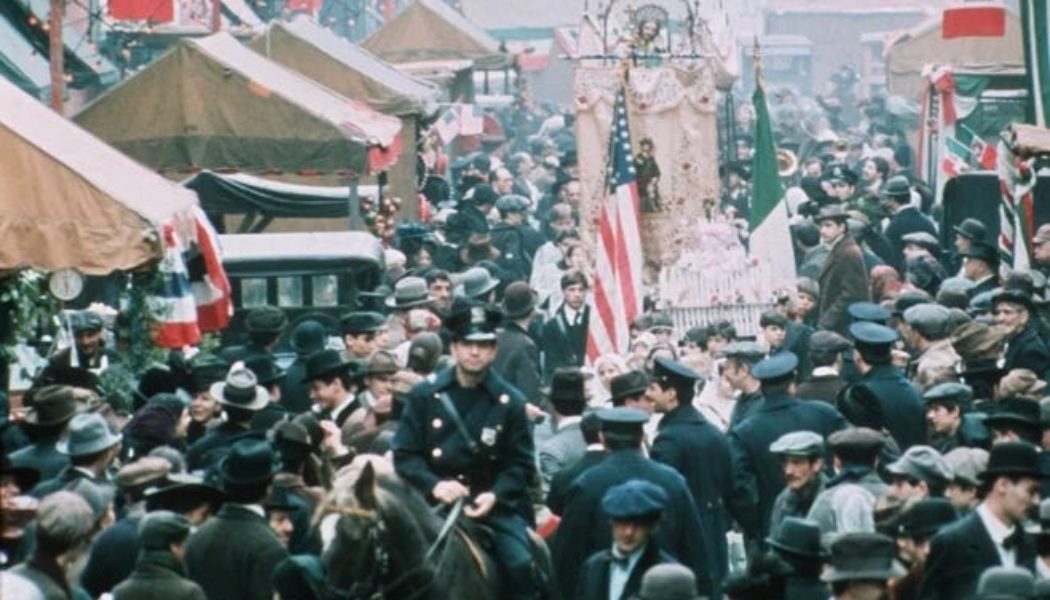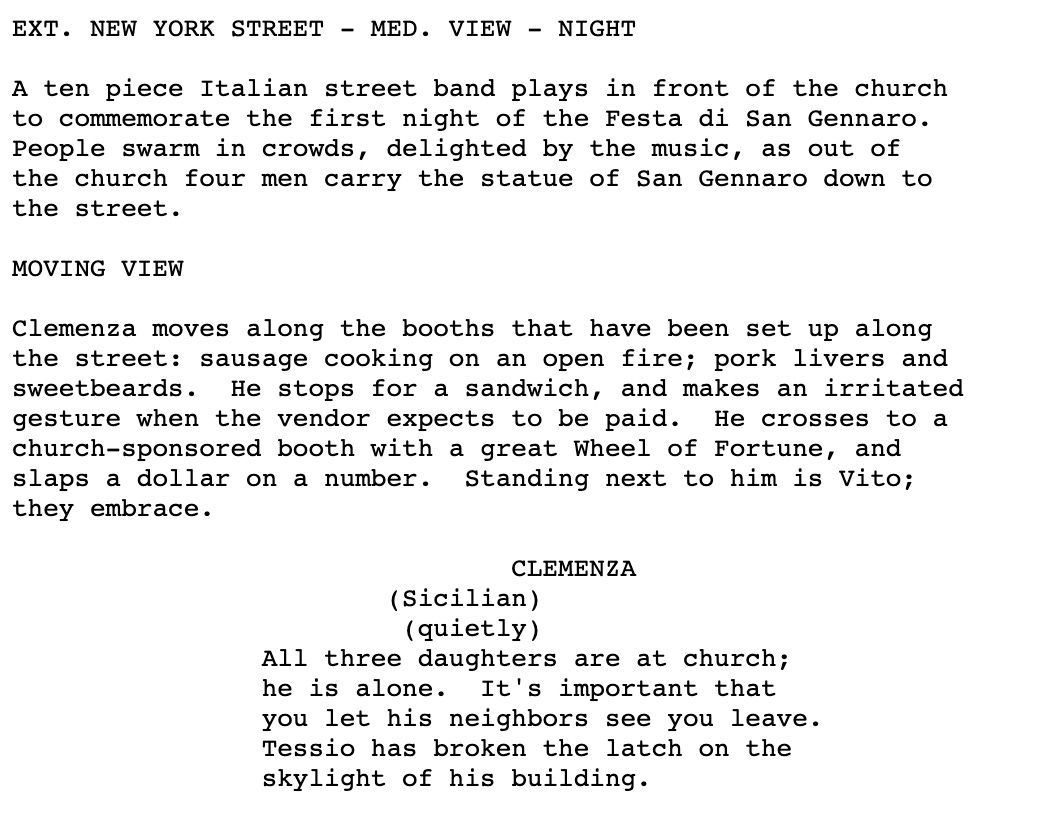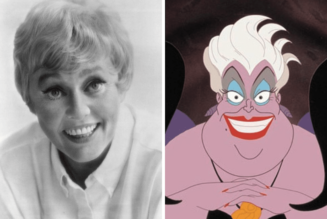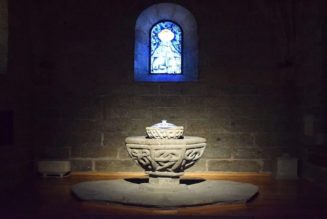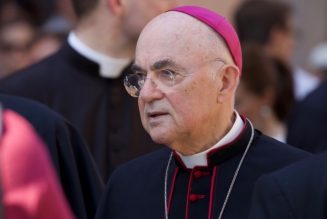Hey everybody,
Today is the feast of St. Januarius, and you’re reading The Tuesday Pillar Post.
Januarius, a fourth-century bishop, was by some accounts made the bishop of Naples at the very young age of 20, amid a period of intense persecution for the Church. After hiding Christians from Roman persecutors for months, Januarius was eventually arrested, and beheaded outside of the city.
His feast is celebrated by southern Italians around the world — in fact, in “The Godfather Part II,” the feast of San Gennaro is the backdrop for young Vito Corleone’s murder of local mob boss Don Fanucci — the murder by which Vito acquires his reputation and status in their Little Italy neighborhood.

But more interesting than the blood of Don Fanucci is the blood of Januarius himself.
According to longstanding popular devotion, two ampoules (not vials) of that blood are reserved in Naples’ cathedral, where, for hundreds of years, it is said to liquefy on the saint’s feast day, and on a Saturday in May, and on December 16, the anniversary of the 1631 eruption of Mt. Vesuvius.
The blood does not always liquefy at the appointed time. But this morning, according to Italian media, it did, to the applause of Catholics gathered at the cathedral.
Of course, Catholics aren’t required to believe in this sort of thing. There are plenty who don’t — and I urge you to make of it what you will.
But for me, it is easy to believe that the God who became man — who conquered death itself, and who comes to us in the form of bread and wine — is certainly capable of liquefying blood in a vial.
We have a God who could make the stones cry out — so he can make some blood liquid-ish in an Italian cathedral, if he wishes to.
And more important, I think God sees our love for him in our enthusiasm for things like the San Gennaro blood. I think God knows the way those devotions help us to form Catholic cultures, Catholic imaginations, and Catholic hearts.
Meanwhile, the important thing is our conversion.
May our own blood be transformed by the God of mercy. May our hearts be melted. May we love him with every part of ourselves, may even our blood give witness to him. How cool would that be?
The news
In the news this week, we have a number of really interesting stories from all corners of the world — the kind of stories you’ll find at The Pillar.
You should read them.
Start with a decades-long legal battle over marriage laws in southern India.
As you might recall, the Knanaya Catholic Archeparchy of Kottayam is a personal jurisdiction established for the Knanaya people, an ethnic group that traces its presence in India back to the fourth century.
You might also recall, from The Pillar’s previous reporting, that Knanaya Catholics are expected to marry someone within the same community, a norm known as endogamy. If they wed a Catholic from another diocese, they relinquish their membership in the archeparchy.
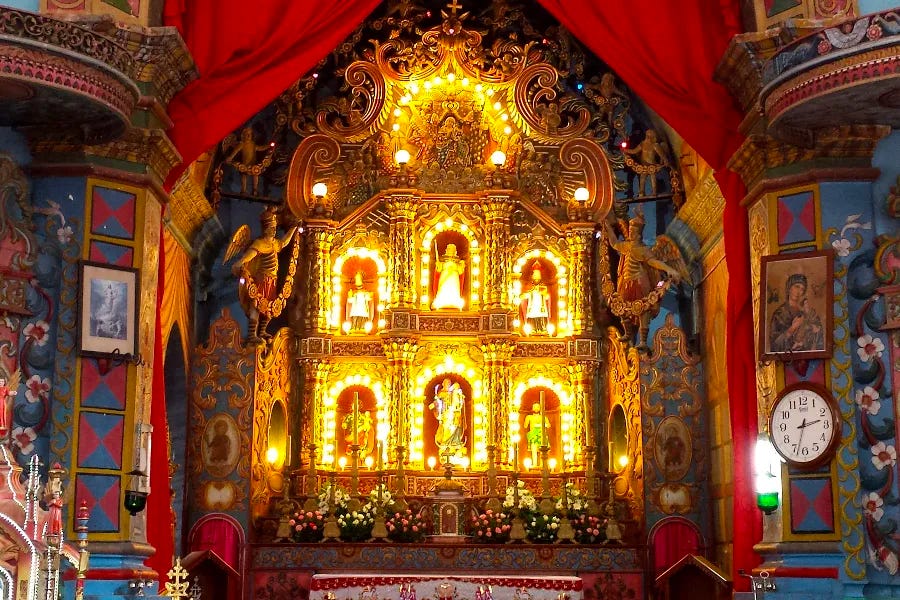
Well, those norms have been the subject of litigation in India for quite some time. And in August, a Knanaya Catholic named Justin John filed suit against his parish, and his eparchy, when he was refused a document that would permit him to validly marry a non-Knanaya woman.
In addition to the civil lawsuit, the case is being considered at the Dicastery of Eastern Catholic Churches in Rome — and that could bring an end to the endogamous marriage practices of the Knanaya eparchy.
But what would that mean for the eparchy itself?
Read all about it, right here.
—
Next, spend some time praying for the Catholics in Nigeria. We report often on religious persecution in Nigeria, where Islamist terrorism against Christian villages is common, and with little intervention from the government.
Alongside that terrorism, though, ordinary strongman crime is on the rise in Nigeria, with little intervention from federal police. Those phenomena are related to the terrorism, as Ed and I discuss in this episode of The Pillar Podcast.
But the rise of armed criminal gangs in Nigeria brings its own problems for the Church. And Sunday saw two such incidents:
In Benin City, a gang broke into a parish church, tried to steal the air conditioner, and when they had no success, made off with the tabernacle. The Pillar spoke with the parish pastor, who probably would have preferred that his HVAC system be stolen, and not the Blessed Sacrament.
In southeastern Nigeria, a priest was driving on Sunday afternoon home to his parish, with a few parishioners in his car, when an armed gang stopped their car on the highway. The priest, Fr. Marcellinus Obioma Okide, was kidnapped with his companions. The local semi-official law enforcement are hunting for Okide and companions, but they’ve not been found, and — surprisingly — it is not clear even that a ransom note has been issued. Eventually, one probably will — commercial kidnapping is big business in Nigeria, and priests are lucrative targets.
Pray, really, just for a minute, for the believers of Nigeria — one of the riskiest places in the world to be a Christian.
—
Now let’s read about Andorra, a microstate on the border between France and Spain — a country so small that you could fit it six times into the state of Rhode Island, with some room to spare.
Andorra has by national law two co-princes — the president of France and the Bishop of Urgell, the Spanish diocese which includes Andorra’s territory. Those princes are the joint heads of state for Andorra, though they mostly rule by delegation to members of their staff.
As it happens, His Royal Excellency (I presume that’s the title), Prince Archbishop Joan Enric Vives i Sicília is about to reach retirement age, prompting questions about how long bishops will remain the princes of Andorra.
In the background to that question is talk about legalizing abortion in Andorra, a move that would be impossible for a prince-bishop to ratify.
So what will happen? Read about it here.
Then, because the royal politics of European microstates are consummately interesting, consider a rewatch of the 2001 classic “Princess Diaries,” complete with all the engaging palace intrigue of Genovia.
Hakuna — yes, the name is funny, but we have to get past that — was founded in 2013, when a priest of Opus Dei took a group of young people to World Youth Day in Brazil, and then took them to serve the poor in a Brazilian city that had been impacted by several natural disasters.
Around the same time, those young people started praying holy hours together, and going on mission trips, and some of them started making music together.
Soon, the group was becoming a movement. The priest left Opus Dei and dedicated himself to Hakuna full time. The Archdiocese of Madrid approved, and then 1,500 members of the group had a meeting with the pope.
Hakuna, which has now released popular pop songs in Spain, published books, and given dozens of retreats — is spreading across Europe, and has even appeared in a few parishes in the U.S.
But what makes the movement unique? Does it have a spirituality? And as young people flock to it — is Hakuna a destination in itself, or a way to discover a vocation in the Church?
The Pillar’s Edgar Beltrán dives deep in this feature report, talking with a lot of people about an emerging ecclesial movement. (and yes — I know! — it has a funny name.)
This week’s Pillar Post is brought to you by Thomason Arts. We create original art and affordable limited edition reproductions for contemporary beauty to flourish in community and culture. As working artists we witness to the reality of the Holy Spirit inspiring people today. Use the code “beauty” at checkout and save 15%.
Now, guys, we need to talk about Rupnik.
Marko Rupnik — renowned sacred artist, former Jesuit, and alleged serial sexual abuser — is back in the news this week, after the Diocese of Rome published a statement on its investigation in the artistic community Rupnik founded.
The statement has caused controversy, as it seems to most readers to question the legitimacy of Rupnik’s canonical prosecution, and to downplay the scandal caused by his prominence in the Church.
The report praised the community’s members for “maintaining silence” about the scores of accusations that Rupnik spiritually and sexually abused women, including through overtly sacrilegious sexual acts — while it concluded that the center is basically healthy, without any particular issues worth noting.
Since that community has defended Rupnik, and he continues to be welcome there, the diocesan assessment has struck a sour note with most reform advocates in the Church.
Even more striking is that the diocesan statement expressed “well-founded doubts about [Rupnik’s] … excommunication.”
Rupnik, you might recall, was briefly excommunicated for soliciting sexual acts in the context of confession. The Society of Jesus has been (eventually) unambiguous in its own findings against Rupnik.
But the Diocese of Rome has decided, for some unclear reason, to question the legitimacy of the Vatican and Jesuit investigations into Rupnik, suggesting that he ought not to have been excommunicated.
In an excellent analysis published yesterday, Ed made a bit of an understatement: “It’s not clear what the vicariate thought to achieve with its statement Monday,” Ed wrote.
“If the intention was to try to insulate the Diocese of Rome from the scandal, and see the statement serve as a kind of final act of distancing from the Rupnik affair, it seems to have backfired badly.”
“Far from helping to close the case on Rupnik, the pope’s diocesan curia have inflamed the scandal all over again, and painted his own diocese as sympathetic to Rupnik’s cause, and at odds with both the DDF and the Society of Jesus,” Ed wrote.
He’s right.
—
OK, a couple of things that are not from The Pillar.
First, here’s a great story about a parish in north Tulsa doing something cool: organizing an affordable soccer league, for kids whose families can’t pay the hundreds of dollars that youth soccer often requires.
A few years ago, Fr. Celestine Obidiegwu, a Tulsa pastor, had a vision for affordable soccer, and he worked with local soccer types to get construction grants for new fields, and scholarship grants for fees and equipment.
That’s pretty cool. You can read about it here.
—
Second, you might recall that Mrs. Flynn and I are on the board of the Fire Foundation of Denver, a nonprofit that gives grants to Catholic schools to help them enroll and educate kids with significant intellectual disabilities. (Here’s a great video about what we do.)
Well, at our fundraising gala last month, we heard a powerful speech from Karen Gaffney, an internationally known long-distance, open-water swimmer, who has completed a relay across the English Channel, a swim between Hawaiian islands, and a bunch of other cool swimming feats.
Anyway, Karen Gaffney is also a graduate of a Catholic high school, and a woman of inspiring faith. Her speech is worth watching:
—
Two other things about the Godfather and St. Januarius.
One: Some people say that Vito Corleone did the murder of Don Fanucci on the feast of St. Rocco, in August. I would probably get letters about this if I didn’t note it.
So I checked in the script. It’s the Festa di San Gennaro. See?
Two: Apparently, the feast of San Gennaro is also the feast at which Vincent Mancini assassinates Joey Zasa in “The Godfather III.”
This is not important, because that movie is practically unwatchable. Pay it no mind.
—
Finally, guys, we should talk for a minute about Pope Pius XII.
The late pope made headlines this week, when a 1942 letter emerged from the Vatican archives, in which a German Jesuit wrote to Pius XII’s secretary in Rome, telling him about the mass killing of Jews and Poles at the Belzec concentration camp in eastern Poland. The letter suggested similar killing was happening at other concentration camps as well.
The letter indicates that Pius XII knew much more about the Holocaust than is often reported, and much earlier — although letters which previously emerged from the Vatican archives have suggested the same thing.
As you probably know, Pius XII is frequently criticized for failing to make an outspoken denunciation of the Holocaust, and the Nazi regime, during the war. The newly emerged letter points to that criticism, suggesting that when Pius XII failed to be more outspoken on those subjects, he was doing so with direct knowledge of what was happening.
In the past, some scholars have argued that Pius XII didn’t directly condemn the Holocaust because he had only unverified or unreliable reports, and was concerned about disinformation. The newly emerged letter, from a source who could be personally verified, would seem to negate that argument.
I don’t want to whitewash the legacy of Pius XII, but I don’t think that it necessarily needs whitewashing either — the charge that Pius XII was indifferent to the killing of the Jewish people doesn’t align with history.
And I think it’s also true that Pius XII faced a set of moral questions that would break most ordinary people.
It is pretty well-established that before the war, Pius XII, then Vatican Secretary of State, was active in opposing the rise of the Nazi regime, and criticizing it on several occasions, including his drafting of the 1937 encyclical Mit Brennender Sorge.
It is also well known that Pius XII approved plans for Church leaders to hide Jewish people in Italy and other European countries, and that the Holy See was arranging clandestine support for resistance movements in Germany.
It is less well-known that even from the beginning of the war, Vatican Radio pronounced that “Hitler’s war is not a just war,” and denounced the “wickedness of Hitler” — along with specific denunciations of the deportation and criminal treatment of Jewish people.
It is also not always well-known that Pius XII denounced several times in his speeches the “exterminatory measures” of “ethnic and national” groups in Europe.
To modern ears, those denunciations may not seem like enough — and indeed, historians will continue to debate what more Pius XII should have said personally. So will the families of Holocaust victims.
But it is worth remembering the immediacy of the issues at play for Pope Pius XII.
The pope lived for much of the war with the expectation that the Nazis were planning to arrest him — he had even made arrangements to provide for the Church during that period.
The pope likely recognized that his arrest, should it come to that, would make the war decidedly more complicated, and would become an extraordinary piece of Nazi propaganda. He also might have recognized that if the diplomatic files in the Vatican had been seized and studied during a German occupation, the war might have well been prolonged, or the Nazis taken the upper hand.
And he also would have recognized that 4,000 Jewish people were hiding in the Vatican and in other Catholic buildings in Italy, on his orders. His own arrest would have meant certain death for some of them.
Every time the historical record of Pius XII is considered — the question of what he did or didn’t say — it seems those Jewish people, his neighbors, for whom he had assumed responsibility, need to factor heavily in the considerations.
Should he have tempted their fate by speaking more boldly on the radio? I’m not sure. I don’t know what effect another speech might have had. And I didn’t look the families-in-hiding in the eyes, as Pius XII surely did.
Whatever he decided, that was the context.
History is complicated. The papacy isn’t easy.
But here’s what is clear, at least to me: We should pray in atonement for the sins against humanity committed during World War II, and indeed, in all wars. We should pray against anti-Semitism, in all its forms.
And we should pray that we are never faced with the dilemmas that Pius XII had to work through.
Please be assured of our prayers. And please pray for us. We need it.
Thanks for subscribing. We really appreciate it.
Yours in Christ,
JD Flynn
editor-in-chief
The Pillar
This week’s Pillar Post is brought to you by Thomason Arts. We create original art and affordable limited edition reproductions for contemporary beauty to flourish in community and culture. As working artists we witness to the reality of the Holy Spirit inspiring people today. Use the code “beauty” at checkout and save 15%.
Comments 18
Services Marketplace – Listings, Bookings & Reviews
